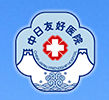预约演示
更新于:2025-05-07

Guangxi Wuzhou Pharmaceutical (Group) Co. Ltd.
更新于:2025-05-07
概览
标签
神经系统疾病
其他疾病
感染
小分子化药
中药
荧光染料
关联
4
项与 广西梧州制药(集团)股份有限公司 相关的药物靶点 |
作用机制 DNA抑制剂 [+3] |
原研机构 |
非在研适应症 |
最高研发阶段批准上市 |
首次获批国家/地区 中国 |
首次获批日期2020-09-13 |
靶点 |
作用机制 VDR激动剂 |
在研机构 |
原研机构 |
在研适应症- |
非在研适应症- |
最高研发阶段批准上市 |
首次获批国家/地区 中国 |
首次获批日期1984-01-01 |
靶点- |
作用机制 诊断染料分子 |
最高研发阶段批准上市 |
首次获批国家/地区 日本 |
首次获批日期1976-09-29 |
1
项与 广西梧州制药(集团)股份有限公司 相关的临床试验NCT06443905
Efficacy, Safety and Cost-effectiveness of Xueshuantong Injection (Lyophilized) in the Prevention of Venous Thromboembolism (VTE) in Hospitalized Patients at Risk of Bleeding: a Real-world Cohort Study
The purpose of this study is to explore the efficacy, safety and cost-effectiveness of Xueshuantong (lyophilized) for the prevention of venous thromboembolism (VTE) in patients at risk of bleeding.
开始日期2023-08-01 |
申办/合作机构  中日友好医院 中日友好医院 [+1] |
100 项与 广西梧州制药(集团)股份有限公司 相关的临床结果
登录后查看更多信息
0 项与 广西梧州制药(集团)股份有限公司 相关的专利(医药)
登录后查看更多信息
15
项与 广西梧州制药(集团)股份有限公司 相关的文献(医药)2024-01-01·Journal of Ethnopharmacology
An innovative processing driven efficient transformation of rare ginsenosides enhances anti-platelet aggregation potency of notoginseng by integrated analyses of processing-(chemical) profiling-pharmacodynamics
Article
作者: Li, Linnan ; Wang, Ziying ; Li, Qi ; Wang, Zhengtao ; Mei, Yuqi ; Yang, Li ; Liao, Qi ; Liu, Longchan ; Fan, Linhong ; Fan, Wenxiang
2022-01-01·Analytical and Bioanalytical Chemistry
Rapid discovery of potential ADR compounds from injection of total saponins from Panax notoginseng using data-independent acquisition untargeted metabolomics
Article
作者: Pang, Xu ; Wang, Chenxi ; Lan, Xing ; Zhu, Tongtong ; Liang, Yunfei ; Zhang, Yi ; Ma, Shuhua ; Han, Lifeng ; Wang, Tao
2020-05-01·Journal of Ethnopharmacology
Comparison of intramuscular and intravenous pharmacokinetics of ginsenosides in humans after dosing XueShuanTong, a lyophilized extract of Panax notoginseng roots
Article
作者: Xu, Fang ; Li, Chuan ; Liu, Guan-Ping ; Yang, Jun-Ling ; Du, Fei-Fei ; Huang, Yu-Hong ; Li, Yan-Fen ; Zhang, Hai-Yan ; Yuan, Lei ; Niu, Wei ; Olaleye, Olajide E ; Wang, Feng-Qing
10
项与 广西梧州制药(集团)股份有限公司 相关的新闻(医药)2025-04-16
·米内网
精彩内容近日,CDE官网显示,广西中恒创新医药的中药1.1类新药三芪颗粒获得临床试验默示许可,用于治疗慢性肾小球肾炎。米内网数据显示,2023年中国三大终端六大市场(统计范围详见本文末)泌尿系统疾病中成药的销售规模超过320亿元,同比增长6.01%。来源:CDE官网三芪颗粒是一款中药1.1类新药,具有益气活血化瘀之功,其临床申请于2025年1月获得CDE承办受理,并于近日顺利获批临床,用于慢性肾小球肾炎属气虚血瘀证者。米内网数据显示,近年来中国三大终端六大市场泌尿系统疾病中成药销售额呈稳步增长态势,2023年拿下创新高的超320亿元,同比增长6.01%;2024上半年继续以4.77%的增速增长至约170亿元,从销售渠道上看,公立医疗机构终端为主力战场,合计占比超过六成。近年来中国三大终端六大市场泌尿系统疾病中成药销售趋势(单位:万元)来源:米内网格局数据库广西梧州中恒集团成立于1993年,旗下控股子公司包括广西梧州制药、重庆莱美药业、湖南康源制药、广西中恒创新医药等。目前,集团已成功开发20多种大类剂型、300余个品种,其中中药制剂130余个、化学药及生物制剂共160余个;拥有超400个药品生产批准文号,其中独家品种约20多个,包括注射用血栓通(冻干)、纳米炭混悬注射液、中华跌打丸、妇炎净胶囊、坤月安颗粒等核心产品,涉及心脑血管、神经内科、内分泌、骨科、妇科、儿科等治疗领域。梧州中恒集团在研1类新药情况来源:米内网中国申报进度(MED)数据库在创新驱动发展战略的引领下,近年来梧州中恒集团持续加大研发投入、加强技术创新。截至目前,集团已有至少3款1类新药处于获批临床及以上阶段,除不久前获批临床的三芪颗粒外,CUD002注射液正开展难治性/耐药复发性卵巢癌的Ⅰ期临床试验,CUD005注射液正开展用于失代偿期肝硬化的Ⅰ期临床试验。来源:米内网数据库、CDE官网注:米内网《中国三大终端六大市场药品竞争格局》,统计范围是:城市公立医院和县级公立医院、城市社区中心和乡镇卫生院、城市实体药店和网上药店,不含民营医院、私人诊所、村卫生室,不含县乡村药店;上述销售额以产品在终端的平均零售价计算。数据统计截至4月16日,如有疏漏,欢迎指正!免责声明:本文仅作医药信息传播分享,并不构成投资或决策建议。本文为原创稿件,转载文章或引用数据请注明来源和作者,否则将追究侵权责任。投稿及报料请发邮件到872470254@qq.com稿件要求详询米内微信首页菜单栏商务及内容合作可联系QQ:412539092【分享、点赞、在看】点一点不失联哦
临床1期临床2期
2025-01-06
·米内网
精彩内容
据国家药监局公告,2024年共有20个中成药(药品名+企业名,下同)获批首家或延长二级保护,其中有18个为独家品种(含独家剂型,下同),超14亿元大品种领跑,步长、佐力、山东新时代等突围;57个中成药申请初保/续保/补充申请获受理,其中53个为独家品种,2个超20亿品种在列。截至目前,仍在保护期内的中药保护品种仅剩69个,其中61个为独家品种,津药达仁堂霸屏。
20个中成药获保护,步长、佐力等突围
2024年,国家药监局发布了7个获批首家中药二级保护的公告,涉及12个中成药,且均为独家品种;此外,发布了6个延长中药品种二级保护的公告,涉及8个中成药,其中有6个为独家品种。
获批首家中药二级保护的12个独家中成药,2023年在中国三大终端六大市场(统计范围详见本文末)的销售额合计超过20亿元,其中贵州百灵的银丹心脑通软胶囊超14亿元,贵州汉方药业的芪胶升白胶囊超3亿元,黑龙江省济仁药业的菖麻熄风片、浙江佐力药业的灵泽片均超1亿元。从市场增长情况看,重庆华森制药的六味安神胶囊、哈尔滨市康隆药业的炎宁糖浆、浙江佐力药业的灵泽片等2023年及2024上半年销售额增速均达两位数。
2024年获批首家中药二级保护的品种注:中国三大终端六大市场销售额,低于1亿元用*代表来源:国家药监局、米内网数据库
贵州汉方药业的芪胶升白胶囊为全国医保乙类、OTC甲类(双跨)品种,系根据苗族民间验方,选用名贵地道药材,运用现代科学方法提炼精制而成的中成药,具有补血益气的功效,适用于气血亏损证所引起的头昏眼花、气短乏力、自汗盗汗,以及白细胞减少症见上述证候者。近年来中国三大终端六大市场芪胶升白胶囊的销售额逐年上涨,2023年超过3.6亿元,2024上半年以8.4%的增速继续增长。
近年来中国三大终端六大市场芪胶升白胶囊销售情况(单位:万元)来源:米内网格局数据库
8个中成药获批延长中药品种二级保护,除了银杏酮酯滴丸、红花逍遥片,其余6个为独家品种。其中,江苏苏中药业的黄葵胶囊2023年在中国三大终端六大市场的销售额接近10亿元,甘肃普安制药的宣肺止嗽合剂超5亿元,内蒙古康恩贝药业圣龙分公司的麝香通心滴丸超3亿元等。
2024年获批延长二级保护的中成药注:中国三大终端六大市场销售额,低于1亿元用*代表来源:国家药监局、米内网数据库
20亿注射剂领跑!57个中成药申请保护
2024年,国家药监局共发布41个中药品种保护受理公示的公告,涉及57个中成药(以药品名+企业名计,53个为独家品种),其中申请初保的品种有47个,申请续保的品种有8个,补充申请的品种有2个。
申请初保的47个中成药,除了宽胸气雾剂,其余46个均为独家品种。47个中成药2023年在中国三大终端六大市场的销售额合计超过90亿元,其中有14个超1亿元,包括广西梧州制药的注射用血栓通(冻干)(20亿+)、贵州三力制药的开喉剑喷雾剂(儿童型)(12亿+)、江苏康缘药业的银杏二萜内酯葡胺注射液(9亿+)、同溢堂药业的益安宁丸(8亿+)、山东凤凰制药的天丹通络片(6亿+)、九华华源药业的百蕊颗粒(5亿+)等。
从市场增长情况看,九华华源药业的百蕊颗粒、湖南德康制药的紫贝止咳颗粒、大连胜光药业的愈心痛胶囊、扬州中惠制药的芪参通络胶囊、健民药业的便通胶囊、贵州三力制药的开喉剑喷雾剂(儿童型)、天士力医药的痰咳净滴丸、安徽雷允上药业的黄厚止泻滴丸、重庆华森制药的六味安神胶囊、亚宝药业四川制药的儿童清咽解热口服液、江苏康缘阳光药业的参乌益肾片等2023年及2024上半年销售额增速均达两位数。此外,健民药业的七蕊胃舒胶囊2024上半年涨超600%。
2024年申请初保的中成药注:中国三大终端六大市场销售额,低于1亿元用*代表来源:国家药监局、米内网数据库
广西梧州制药的注射用血栓通(冻干)为全国医保甲类品种,具有活血祛瘀、通脉活络的功效,适用于瘀血阻络,中风偏瘫,胸痹心痛及视网膜中央静脉阻塞症。2023年该产品在中国三大终端六大市场的销售额超过20亿元,2024上半年有所回落。在心脑血管疾病中成药TOP10品牌中,广西梧州制药的注射用血栓通(冻干)近年来一直榜上有名。
申请续保的8个中成药2023年在中国三大终端六大市场的销售额合计超过30亿元,其中有5个销售额超过1亿元,包括漳州片仔癀药业的片仔癀(20亿+)、湖南汉森制药的四磨汤口服液(5亿+)、金花企业西安金花制药厂的金天格胶囊(5亿+)等。
2024年申请续保的中成药注:中国三大终端六大市场销售额,低于1亿元用*代表来源:国家药监局、米内网数据库
最新!保护期内仅有69个中药品种
我国自1993年起实行中药品种保护制度,在一定程度上促进中药产业的现代化、集约化和规模化,同时鼓励了中药品种创新,培育了一大批优秀的中成药品种和中药企业。
随着时间流逝,早期被纳入保护的品种逐渐面临到期的局面,截至目前,仍在保护期内的中药保护品种仅剩69个,其中61个为独家品种。从保护级别看,除了云南白药的云南白药胶囊及云南白药为一级保护,其余品种均为二级保护。
目前还在保护期内的中药品种来源:米内网中药保护品种目录数据库
从治疗类别看,69个中成药涵盖13个治疗大类,其中心脑血管疾病用药有20个,儿科用药、骨骼肌肉系统疾病用药、呼吸系统疾病用药各有8个,妇科用药、消化系统疾病用药各有5个,泌尿系统疾病用药有4个等。米内网数据显示,2023年中国三大终端六大市场心脑血管疾病中成药销售额超过960亿元,为最畅销的中成药品类。
从企业情况看,津药达仁堂以5个品种领跑,珍宝岛药业、重庆华森制药各有3个品种在列,汉森制药、康弘药业、康缘药业、摩美得制药、南昌弘益药业、清华德人西安幸福制药、上海医药、希尔安药业、云南白药等各有2个品种在列。
资料来源:米内网数据库、国家药监局等注:米内网《中国三大终端六大市场药品竞争格局》,统计范围是:城市公立医院和县级公立医院、城市社区中心和乡镇卫生院、城市实体药店和网上药店,不含民营医院、私人诊所、村卫生室,不含县乡村药店;上述销售额以产品在终端的平均零售价计算。数据统计截至2024年12月31日,如有疏漏,欢迎指正!
本文为原创稿件,转载请注明来源和作者,否则将追究侵权责任。投稿及报料请发邮件到872470254@qq.com稿件要求详询米内微信首页菜单栏商务及内容合作可联系QQ:412539092
【分享、点赞、在看】点一点不失联哦
一致性评价医药出海申请上市
2024-10-31
·新药前沿
关注新药,直击前沿!
2010年9月,DelMar Pharmaceuticals与Valent Technologies签订了专利转让协议,以获取后者VAL-083相关的专利和原型药物产品。
此后,DelMar开始对VAL-083治疗难治性多形性胶质母细胞瘤(GBM)进行开发,并于2011年9月获得美国食品药品监督管理局(FDA)批准其新药临床试验申请(IND)。
实属意外巧合的是,DelMar直到开始寻找CMO时才发现,其开发的“VAL-083”其实早已在中国获得批准上市(中国批准的药品名称为“注射用去水卫矛醇”)。
DelMar在进行尽职调查时,搜索了新的专利申请,以对VAL-083进行专利布局保护。
所幸的是,当时在中国几乎没有相关专利申请。DelMar在美国申请了保护VAL-083制剂和用法的专利并获得授权(US9901563和US11026914),保护期最晚可到2034年。
注射用去水卫矛醇最早由广西中医药研究院开发,而后技术转让予梧州制药。1985年4月,原料药卫康醇和制剂注射用卫康醇(静脉注射剂)获广西区卫生厅生产批件。2002年,卫康醇和注射用卫康醇由广西地方药品标准获批上升为国家药品标准,并分别更名为去水卫矛醇和注射用去水卫矛醇。目前梧州制药为注射用去水卫矛醇全球独家生产企业。获批适应症为:慢性粒细胞性白血病与肺癌。
2012年10月,DelMar与广西梧州药业达成战略合作,共同开发VAL-083。DelMar在美国使用广西梧州药业的药品进行临床研究,作为GBM的潜在治疗方法。
此外,DelMar开展研究,旨在证明注射用去水卫矛醇对目前疗法无效癌症的疗效。研究数据的数据阐明了慢性粒细胞白血病和肺癌的亚型,这些亚型在东亚人群中独一无二,并且对酪氨酸激酶抑制剂(TKI)治疗具有高度耐药性。DelMar的研究证明了该药物对TKI疗法有耐药性的癌细胞系的活性。两家公司计划利用DelMar临床项目产生的新数据来扩大中国市场,并在全球范围内寻求该药物在多种适应症方面的监管批准。值得一提的是,注射用去水卫矛醇在去年在国内还被纳入《胶质瘤化疗专家共识(CACA神经肿瘤专业委员会2023)》。
此次合作希望将DelMar与广西梧州药业的独家供应关系拓展至中国市场及中国以外的所有市场。两家公司将共同努力,确保产品符合全球标准,以加快国际开发和监管审批。梧州药业将成为注射用去水卫矛醇的独家供应商,DelMar将负责开发和商业化。
DelMar曾经在中国临床医生中进行了调查,结果发现大多数中国医生从未听说过注射用去水卫矛醇这种药物。即使那些听说过的医生也不确定其是否适合包括铂类化疗或酪氨酸激酶抑制剂在内的治疗方案。DelMar与MD安德森癌症中心和不列颠哥伦比亚癌症机构的研究人员进行的临床前研究表明,VAL-083与铂类疗法具有协同作用,且毒性没有重叠,并且对铂类化疗方案有耐药性的肿瘤有效。
该药物对多种癌症(包括非小细胞肺癌)具有广泛的治疗效果,可能在治疗因p53突变而对治疗产生耐药性的实体肿瘤患者方面具有优势。这些患者包括肺癌、卵巢癌和宫颈癌。注射用去水卫矛醇用于治疗广泛期小细胞肺癌患者上市后IV期试验目前在国内正在进行中。
2020年6月,DelMar Pharmaceuticals和Adgero Biopharmaceuticals两家公司达成最终合并协议,更名为Kintara Therapeutics。
遗憾的是,2023年10月,Kintara Therapeutics公布了II/III期全球脑胶质瘤适应性临床创新试验体系(GBM AGILE)研究的初步顶线结果,该研究对VAL-083与胶质母细胞瘤现行治疗标准进行了比较:VAL-083的初步结果并未显示出优于标准治疗的益处。基于此项研究成果,Kintara暂停了VAL-083的开发。
尽管VAL-083在全球GBM合作开发探索遭遇挫折,但也为国内此前特定历史条件下批准的新药再次开发提供新思路。随着医学生物学和技术的发展,挖掘国产老“新药”的潜力或许同样存在机遇。
本文由「新药前沿」微信公众号根据公开资料整理编辑,欢迎个人转发至朋友圈。媒体或机构转载授权请在「新药前沿」微信公众号留言公众号名称,审核通过后开通白名单获取转载授权,转载请标识来源。
免责声明:本文仅作信息交流之目的,非投资建议或者治疗方案推荐,「新药前沿」微信公众号不对任何主体因使用本文内容而导致的任何损失承担责任。
限于作者水平和专业知识所限,如有谬误,欢迎指正!
临床申请申请上市专利到期
100 项与 广西梧州制药(集团)股份有限公司 相关的药物交易
登录后查看更多信息
100 项与 广西梧州制药(集团)股份有限公司 相关的转化医学
登录后查看更多信息
组织架构
使用我们的机构树数据加速您的研究。
登录
或

管线布局
2026年01月05日管线快照
管线布局中药物为当前组织机构及其子机构作为药物机构进行统计,早期临床1期并入临床1期,临床1/2期并入临床2期,临床2/3期并入临床3期
批准上市
4
登录后查看更多信息
药物交易
使用我们的药物交易数据加速您的研究。
登录
或

转化医学
使用我们的转化医学数据加速您的研究。
登录
或

营收
使用 Synapse 探索超过 36 万个组织的财务状况。
登录
或

科研基金(NIH)
访问超过 200 万项资助和基金信息,以提升您的研究之旅。
登录
或

投资
深入了解从初创企业到成熟企业的最新公司投资动态。
登录
或

融资
发掘融资趋势以验证和推进您的投资机会。
登录
或

生物医药百科问答
全新生物医药AI Agent 覆盖科研全链路,让突破性发现快人一步
立即开始免费试用!
智慧芽新药情报库是智慧芽专为生命科学人士构建的基于AI的创新药情报平台,助您全方位提升您的研发与决策效率。
立即开始数据试用!
智慧芽新药库数据也通过智慧芽数据服务平台,以API或者数据包形式对外开放,助您更加充分利用智慧芽新药情报信息。
生物序列数据库
生物药研发创新
免费使用
化学结构数据库
小分子化药研发创新
免费使用

